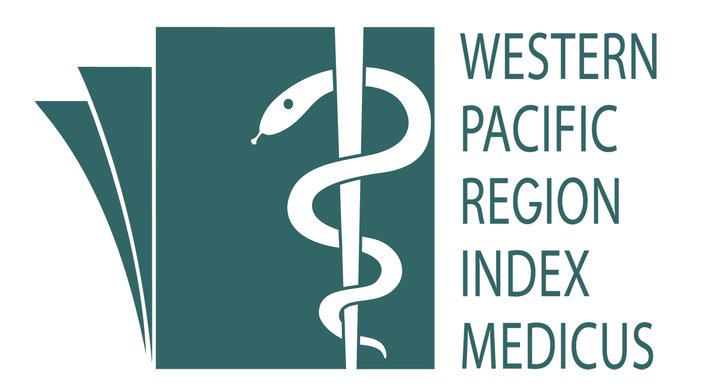Environmental Determinants in Sustaining the Transmission of Lymphatic Filariasis: A Systematic Review
Keywords:
environmental determinants, meteorological, transmission risk, Diethyl Carbamazine - MDA - Lymphatic Filariasis., elephantiasisAbstract
Introduction:
Since mass drug administration continues in many of the endemic countries, it is vital to synthesise evidence to adapt the challenges contributed by the environments. As such, the aim of this review was to explore relationship between lymphatic filariasis prevalence and potential environmental determinants .
Methodology:
We searched the electronic databases PubMed, Web of Science, Cochrane, and Scopus between Jan 1, 2013, and Dec 31, 2022, for studies fulfilling the following criteria: it was an original article investigating the environmental determinants associated with transmission of lymphatic filariasis; and the study was published in English. The quality assessment tools for observational studies from the National Heart, Lung, and Blood Institute was used to assess the study quality. This systematic review was registered with the PROSPERO database (CRD42023393018).
Results:
We identified 409 potentially eligible published articles, of which 11 met our inclusion criteria. The main environmental determinants associated with lymphatic filariasis transmission were Normalised Difference Vegetation Index (NDVI), land cover, distance to waterbody, rainfall/precipitation, elevation, slope, day land surface temperature, average annual temperature, house type and distance to stable light.
Conclusion:
This review is one of the steps towards understanding the associations between environmental determinants and transmission of lymphatic filariasis. These results can be used in future evidence-based strategies to strengthen surveillance and control strategies.
References
WHO. The World Health Report 1995 - Bridging the gaps. Vol. 16, World Health Forum. 1995.
WHO. Lymphatic Filariasis: Ready for global elimination. 2000. Available from: https://www.who.int/publications/i/item/WHO-CDS-CPE-CEE-2000.2. [Accessed on: 15 Jan 2023]
WHO. Lymphatic filariasis: Key facts [Internet]. WHO Media Centre. 2018. Available from: https://www.who.int/news-room/fact-sheets/detail/lymphatic-filariasis. [Accessed on: 15 Jan 2023]
Ottesen EA. The global programme to eliminate lymphatic filariasis. Trop Med Int Heal. 2000;5:5.
WHO. Global programme to eliminate lymphatic filariasis: progress report, 2021. 2022. Available from: https://www.who.int/publications/i/item/who-wer9841-489-502. [Accessed on: 15 Jan 2023]
Mulyono RA, Hadisaputro S WH. Risk factors of environment and behavioral related to incidence of filariasis in Pekalongan Area. J Bina Sanitasi. 2008;1:1–10.
Ibrahim Edy Sapada C. Environmental and Socioeconomics Factors Associated with Cases of Cinical Filariasis in Banyuasin District of South Sumatera, Indonesia. Int J Collab Res Intern Med Public Heal. 2015;7(6):132–40.
Page MJ, McKenzie JE, Bossuyt P, Boutron I, Hoffmann TC, Mulrow CD, et al. The PRISMA 2020 statement: an updated guideline for reporting systematic reviews. BMJ. 2021 Mar 29;372:n71. doi: 10.1136/bmj.n71.
Soilemezi D, Linceviciute S. Synthesizing Qualitative Research: Reflections and Lessons Learnt by Two New Reviewers. Int J Qual Methods. 2018;17:1–14.
Bramer WM, Giustini D, De Jonge GB, Holland L, Bekhuis T. De-duplication of database search results for systematic reviews in EndNote. J Med Libr Assoc. 2016;104(3):240–3.
Cavaleri R, Bhole S, Arora A. Critical Appraisal of Quantitative Research. In: Handbook of Research Methods in Health Social Sciences. NSW: Springer Nature Singapore Pte Ltd.; 2018.
Stanton MC, Molyneux DH, Kyelem D, Bougma RW, Koudou BG, Kelly-Hope LA. Baseline drivers of lymphatic filariasis in Burkina Faso. Geospat Health. 2013;8(1):159–73.
Manhenje I, Teresa Galán-Puchades M, Fuentes M V. Socio-environmental variables and transmission risk of lymphatic filariasis in central and northern Mozambique. Geospat Health. 2013;7(2):391–8.
Ikhwan Z, Herawati L, Suharti. Environmental, behavioral factors and filariasis incidence in Bintan district, Riau Islands Province. Kesmas Natl Public Heal J. 2016;11(1):39–45.
Siwiendrayanti A, Pawenang ET, Indarjo S. Spatial analysis and behavior evaluation to identify differentiating factors of filariasis endemic status. Adv Sci Lett. 2017;23(4):3349–54.
Edirisinghe G. Socio- economic and Environmental Determinants of Filariasis in Matara District of Sri Lanka. Am Sci Res J Eng Technol Sci. 2017;32(1):105–18.
Srividya A, Subramanian S, Sadanandane C, Vasuki V, Jambulingam P. Determinants of transmission hotspots and filarial infection in households after eight rounds of mass drug administration in India. Trop Med Int Heal. 2018;23(11):1251–8.
Goldberg EM, King JD, Mupfasoni D, Kwong K, Hay SI, Pigott DM, et al. Ecological and socioeconomic predictors of transmission assessment survey failure for lymphatic filariasis. Am J Trop Med Hyg. 2019;101(1):271–8.
Kwarteng A, Arthur YD, Yamba JK, Sylverken AA, Kini P, Ahuno ST, et al. Influence of seasonal variation on reported filarial attacks among people living with lymphedema in Ghana. BMC Infect Dis. 2019;19(442).
Kwarteng EVS, Andam-Akorful SA, Kwarteng A, Asare DCB, Quaye-Ballard JA, Osei FB, et al. Spatial variation in lymphatic filariasis risk factors of hotspot zones in Ghana. BMC Public Health. 2021;21(230).
Lemin ME, Cadavid Restrepo A, Mayfield HJ, Lau CL. Spatially Explicit Environmental Factors Associated with Lymphatic Filariasis Infection in American Samoa. Trop Med Infect Dis. 2022;7(295).
Simón F, González-Miguel J, Diosdado A, Gómez PJ, Morchón R, Kartashev V. The Complexity of Zoonotic Filariasis Episystem and Its Consequences: A Multidisciplinary View. Biomed Res Int. 2017; 2017:6436130.
Eberhard ML. Zoonotic Filariasis. In: Tropical infectious diseases: principles, pathogens, and practice. 3rd ed. Elsevier; 2011. p. 750–8.
Huang X, Deng X, Kou J, Liu X, Wang H, Cheng P, et al. Elimination of Lymphatic Filariasis in Shandong Province, China, 1957-2015. Vector-Borne Zoonotic Dis. 2020;20(12):875–81.
Okorie PN, McKenzie FE, Ademowo OG, Bockarie M, Kelly-Hope L. Nigeria Anopheles vector database: An overview of 100 years’ research. PLoS One. 2011;6(12):e28347.
Cano J, Rebollo MP, Golding N, Pullan RL, Crellen T, Soler A, et al. The global distribution and transmission limits of lymphatic filariasis: Past and present. Parasites and Vectors. 2014;7(466).
Slater H, Michael E. Predicting the current and future potential distributions of lymphatic filariasis in africa using maximum entropy ecological niche modelling. PLoS One. 2012;7(2):e32202.
Eneanya OA, Cano J, Dorigatti I, Anagbogu I, Okoronkwo C, Garske T, et al. Environmental suitability for lymphatic filariasis in Nigeria. Parasit Vectors. 2018;11(513).
M.Palaniyandi. A geo-spatial modeling for mapping of filariasis transmission risk in India, using remote sensing and GIS. Int J Mosq Res. 2014;1(1):20–8.
Remme JHF, Feenstra P, Lever PR, Medici AC, Morel CM, Noma M, et al. Tropical Diseases Targeted for Elimination: Chagas Disease, Lymphatic Filariasis, Onchocerciasis, and Leprosy. In: Disease Control Priorities in Developing Countries. 2nd Editio. Washington DC; 2006.
Chang M. S. Operational issues in the control of the vectors of Brugia. Ann Trop Med Parasitol. 2002;96(2):71–6.
Mak JW, Yen PK, Lim KC, Ramiah N. Zoonotic implications of cats and dogs in filarial transmission in Peninsular Malaysia. Trop Geogr Med. 1980;32(3):259–64.
Irwin PJ, Jefferies R. Arthropod-transmitted diseases of companion animals in Southeast Asia. Trends Parasitol. 2004;20(1):27–34.
Mallawarachchi CH, Chandrasena NTGA, Wickramasinghe S, Premaratna R, Gunawardane NYIS, Mallawarachchi NSMSM, et al. A preliminary survey of filarial parasites in dogs and cats in Sri Lanka. PLoS One. 2018;13(11):1–11.
Ambily VR, Pillai UN, Arun R, Pramod S, Jayakumar KM. Detection of human filarial parasite Brugia malayi in dogs by histochemical staining and molecular techniques. Vet Parasitol [Internet]. 2011;181(2–4):210–4.
Rushton G. Public health, GIS, and spatial analytic tools. Annu Rev Public Health. 2003;24(1):43–56.
Graham AJ, Atkinson PM, Danson FM. Spatial analysis for epidemiology. Acta Trop. 2004;91(3):219–25.
Molyneux DH. Filaria control and elimination: diagnostic, monitoring and surveillance needs. Trans R Soc Trop Med Hyg. 2009;103(4):338–41.
Lindsay SW. Mapping and estimating the population at risk from lymphatic filariasis in Africa. Trans R Soc Trop Med Hyg. 2000;94(1):37–45.
Srividya A, Michael E, Palaniyandi M, Pani SP, Das PK. A geostatistical analysis of the geographic distribution of lymphatic filariasis prevalence in Southern India. Am J Trop Med Hyg. 2002;67(5):480–9.
Beau De Rochars MVE, Milord MD, St. Jean Y, Désormeaux AM, Dorvil JJ, Lafontant JG, et al. Geographic distribution of lymphatic filariasis in Haiti. Am J Trop Med Hyg. 2004;71(5):598–601.
Sabesan S, Raju HKK, Srividya AN, Das PK. Delimitation of lymphatic filariasis transmission risk areas: A geo-environmental approach. Filaria J. 2006;5:4–9.
Sabesan S, Raju KHK, Subramanian S, Srivastava PK, Jambulingam P. Lymphatic filariasis transmission risk map of India, Based on a geo-environmental risk model. Vector-Borne Zoonotic Dis. 2013;13(9):657–65.
Bonfim C, Alves A, Costa TR, Alencar F, Pedroza D, Portugal JL, et al. Spatial analysis and privation index to identify urban areas with a high risk of lymphatic filariasis. Trop Med Int Heal. 2011;16(6):748–55.
Downloads
Published
How to Cite
Issue
Section
License
Copyright (c) 2025 Ahmad Farid Nazmi Abdul Halim, Shahrul Azhar Md Hanif, Noor Adilla Md Anuar Hussain, Aliff Faisal Ahmad Kamar, Alabed Ali A. Alabed, Rahmat Dapari, Mohd Rohaizat Hassan

This work is licensed under a Creative Commons Attribution-NonCommercial 4.0 International License.
IJPHR applies the Creative Commons Attribution (CC BY) license to articles and other works we publish. If you submit your paper for publication by IJPHR, you agree to have the CC BY license applied to your work. Under this Open Access license, you as the author agree that anyone can reuse your article in whole or part for any purpose, for free, even for commercial purposes. Anyone may copy, distribute, or reuse the content as long as the author and original source are properly cited. This facilitates freedom in re-use and also ensures that IJPHR content can be mined without barriers for the needs of research.





